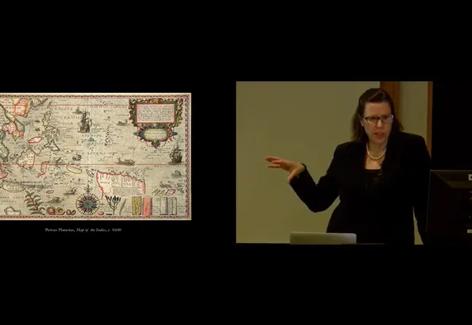Coveting Nature explores the ways in which botanists and entomologists worked in tandem with artists to record and disseminate knowledge in the early modern period (1500–1800).
Sponsored in part by Fred and Donna Giertz
Ricker Library of Architecture and Art has developed a library guide with details about this exhibition, as well as supplementary materials and curator-recommended readings: Library Guide to Coveting Nature: Art, Collecting, and Natural History in Early Modern Europe
In these centuries, the refinement of printed images revolutionized the observational sciences. Increasingly sophisticated woodcuts and engravings superseded hand-drawn images, cruder prints, and strictly verbal descriptions, while also appealing to artists and art lovers. These images could be augmented with hand coloring and were made by professional printmakers as well as by author-illustrators who engraved the plates for their own publications. Illustrated botanical and entomological publications served a variety of purposes for contemporaries—they advanced scientific study, inspired religious contemplation, and served as models for artists including still life painters and embroiderers. Coveting Nature also explores the early and significant contributions of female artists and naturalists such as Maria Sibylla Merian (1647–1717) and Anna Ruysch (1666–1754) and their enduring legacy for contemporary artists.
Coveting Nature includes prints and illustrated publications by Basilius Besler, Elizabeth Blackwell, Carolus Clusius, Edward Donovan, Leonhart Fuchs, Johannes Goedaert, François-Frédéric Grobon, Jacob Hoefnagel, Robert Hooke, Pietro Mattioli, Maria Sibylla Merian, Pierre-Joseph Redouté, and Christoph Jacob Trew. In addition, the exhibition showcases KAM’s new acquisition, Anna Ruysch’s c.1690s painting “Still Life of Flowers in a Glass Vase on a Stone Ledge.” These works are joined by contemporary prints made in honor of Maria Sibylla Merian by Lynne Allen, Emily Arthur, Lari Gibbons, Emmy Lingscheit, Joanne Price, Jenny Schmid, and Ericka Walker and a botanical sculpture by Joey Kirkpatrick and Flora C. Mace.
Co-curators: Anna Chen, head librarian at William Andrews Clark Memorial Library, University of California, Los Angeles, and Maureen Warren, curator of European and American Art at Krannert Art Museum





